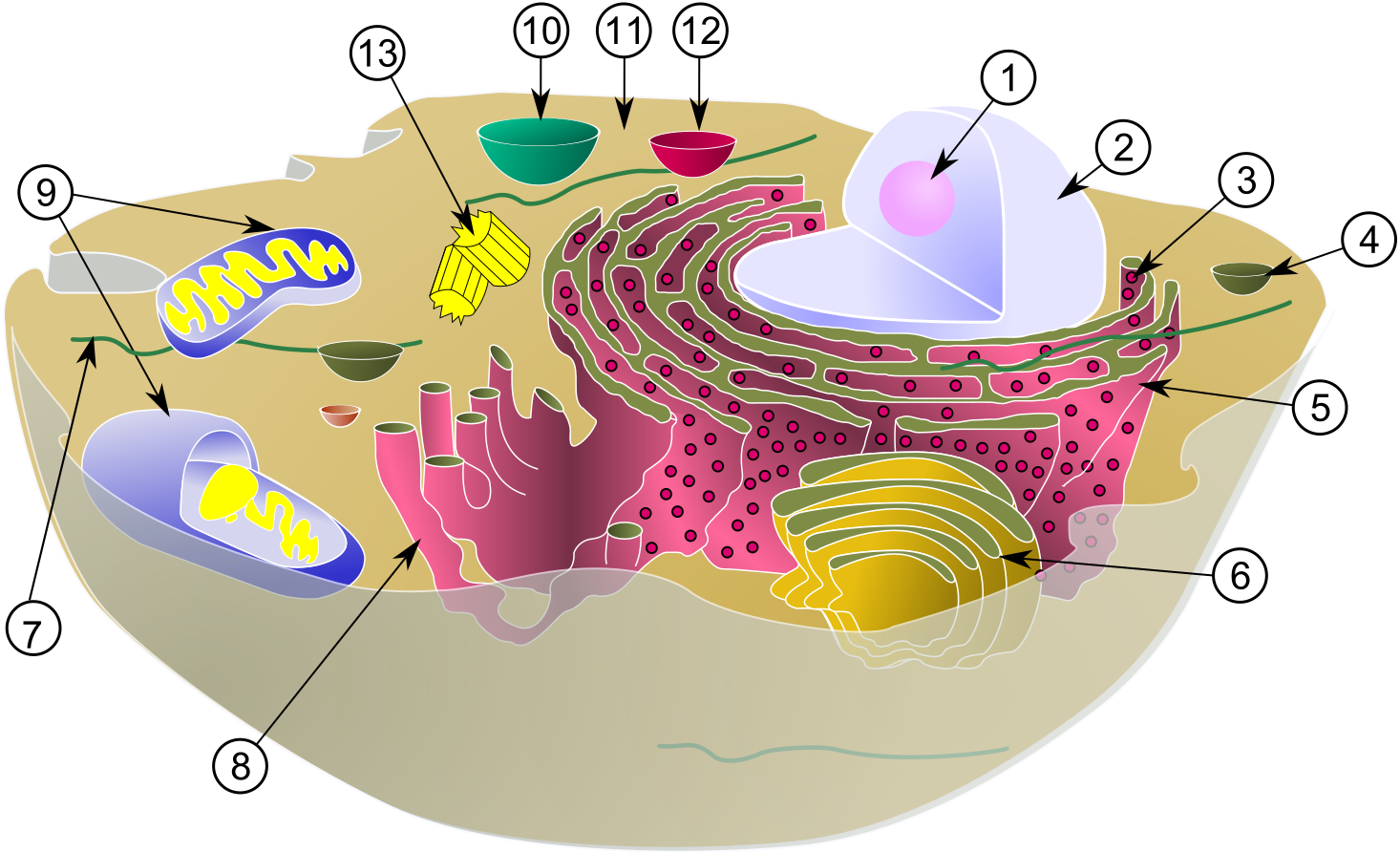Orbital compartmentation
Cytosol[edit | edit source]
It is the cytoplasm itself, i.e. liquid part without organelles. Metabolism takes place here:
- carbohydrates: glycolysis, part gluconeogenesis, glycogenolysis and glycogen synthesis and pentose cycle
- fatty acids: MK synthesis
- amino acid: synthesis of non-essential AMK, some transaminations
Among other things, part of the heme synthesis and urea pathways, purine and pyrimidine metabolism takes place here.

Mitochondria[edit | edit source]
It belongs to the important organelles of cellular metabolism. Metabolism takes place here:
- saccharides: PDH, beginning of gluconeogenesis (conversion of pyruvate to oxaloacetate)
- fatty acids: β-oxidation of MK (Lynen's spiral), ketobodies synthesis (only liver cells), degradation of ketobodies (only extrahepatic tissues)
- amino acid: oxidative deamination of glutamate and some transaminations
The junction of all catabolic reactions is located here - Krebs cycle. The respiratory chain and oxidative phosphorylation take place on the inner mitochondrial membrane. Mitochondria are also important for heme and urea synthesis.
Rough endoplasmic reticulum[edit | edit source]
It has an important role in proteosynthesis (translation of mRNA takes place here). The synthesized proteins are subsequently post-translationally modified (oxidation, cleavage, methylation, phosphorylation, glycosylation).
Smooth endoplasmic reticulum[edit | edit source]
It has a significant role in the synthesis of TAG and phospholipids. Enzymes for "elongation" (up to a maximum length of 24 carbons in nervous tissue) and "desaturation" (up to a maximum distance of 9 carbons from the carboxyl group) of fatty acids are located here. Part of steroid synthesis and biotransformation of xenobiotics takes place here. In some tissues there is a localized glucose-6-phosphatase which converts glucose-6-phosphate into glucose.
Golgi Apparatus[edit | edit source]
Post-translational modification of proteins (e.g. glycosylation), further sorting of proteins and formation of ``secretory vesicles takes place here.
Lysosomes[edit | edit source]
It is used for the hydrolytic cleavage of proteins, carbohydrates, lipids and nucleic acids.
Peroxisomes[edit | edit source]
It serves to degrade MK with a long chain (from 20 carbons).


